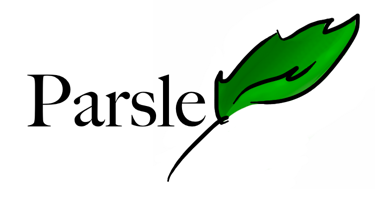Documentation
Are you brand new to parslet? Well then let’s introduce you guys. This is what you should read and try out first.
There’s also a video version!
Parslet comes with a lot of examples that explain how to use various aspects. Take a look at those.
This is the real technical documentation, showing you how to use all aspects of parslet. Especially:
- Overview explains parslet’s goals and gives you a bigger picture.
- Using Parslet::Parser to write parsers.
- Using Parslet::Transform to transmogrify your intermediary trees.
- Tricks for common situations.
Projects
There is a Projects page with everything from JSON through Java to Ruby parsed with parslet.
Presentations
- Parslet, An Introduction introduces parslet in a few poignant slides. (Bo Jeanes and David Pick)
Videos
- Writing DSL’s with Parslet Talk given by Jason Garber at the "Wicked Good Ruby Conference 2013.
Blogs
- Parslet Intro explains quite a few things on how parsers work and on parser metaprogramming. Besides, Florian Hanke also explains how to create an ERB parser in just a few lines!
- Parslet and JSON shows how to construct a JSON parser in a few lines. John does a great job of explaining how parslet ties back in with railroad diagrams.
- Parsing TOML in Ruby with Parslet shows how to parse TOML (Tom’s Obvious Minimal Language) using parslet. I sense a theme here. Code is on github – this is the first article in a series, linked from the article.
- Write You a Parser for Fun and Win a succinct writeup on parsing text formats by David Eisinger.
- Build a query parser a step-by-step tutorial showing how to take user input and generate Elasticsearch queries by Luke Francl.
The YARD documentation will help you with the nitty gritty. This documentation is real important too. It will be constantly improved! (Thanks linode.com and DockYard for sponsoring this tool.)
